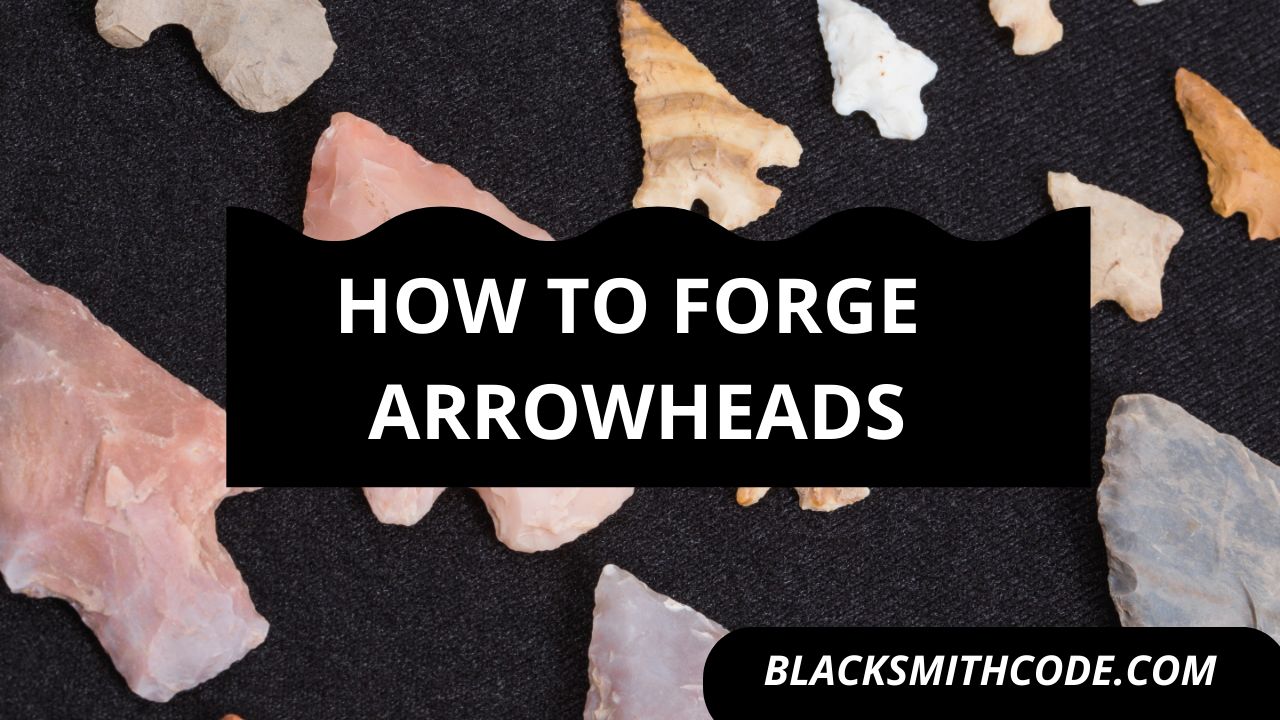Do you know you can still learn how to forge weapons just as the medieval blacksmiths? An arrow is one of the easiest to make weapons. It is also easy to use and has a lot of functionalities. Read on to find out how to forge arrowheads.
Aside from its use in wars in the medieval age, it is also a helpful hunting tool. An arrow is an interesting blacksmithing piece. It is easy to make, and the materials for the process are natural to get.
Most people going into the blacksmithing process are looking to forge weapons like knives, swords, and arrows. This forging process is quite easy, even for beginners. Below are the easy practical steps that can guide you through the process.
Instructions on How to Forge Arrowheads
Step 1: Get Your Materials
For an arrowhead, you don’t need a truck of steel. All you need is sizable steel of suitable thickness. Also, the steel should be ideal for making hard and pointed ends.
Step 2: Getting Started
First off, you should be aware that an arrowhead should have two parts. The first part will form the sharp pointed edge of the arrow. The other end would create a cone or space where the arrow stick will be attached.
Your steel must be in the bar/rod shape, and it should be of almost the same thickness as the shaft. Measure and cut the desired length. Remember to leave some excesses for the sharpening and grinding process.
If you have realized the parts for these two, then you are good to go!
Step 3: Form The Socket
The socket is the end of the arrowhead, where the arrow stick would be attached. The size of the cavity would be dependent on the overall size of the arrow and the shaft that you intend to connect.
Quick Steps
- Upset the end of the rod/bar you want to use for the socket. This process aims to widen the end of the bar.
- Heat the metal to orange glow.
- Hammer it down on the anvil until it becomes flat.
- Continue with the hammering until you have a fishtail shape. This procedure is called fishtailing. At this point, the socket end must be completely flat.
- Next, start rolling the flat end to form the socket. Be aware that the shape of the cavity is more of a cone than a cylinder. Keep this in mind while creating the socket.
- Ensure that the socket size is a perfect fit for your shaft before cutting off the excesses.
It is important to note that you might have to re-heat the metal before the end of this procedure if you are not fast enough.
Step 4: Form the Tip
The tip of an arrowhead is the offensive and penetrating part of the arrow. So, you have to pay attention to this part when forging an arrowhead. It would be best if you had this end to be sharp and pointed. Also, it must be hard and strong enough to penetrate the surfaces easily.
Quick Steps
- Heat the end of the metal for the tip.
- Hammer at a precise angle to give a flat pointe end. Please note that the flat here is not the same as that of the socket.
- The width or how pointed the arrowhead will vary. It is dependent on the choice of blacksmiths.
- You can leave it flat or make it more pointed, depending on the intended use.
Step 5: Tempering
Now, it is time to make the arrowhead suitable for its function.
Quick Steps
- Heat the arrowhead to a suitable temperature. Please don’t wait until it gets excessively hot before removing it from the forge.
- Cool it rapidly in water or quenching oil.
Step 6: Grinding
The grinding stage is where you perfect the edges of your arrowhead. Grind the edges with a suitable grinder until it becomes nice and sharp. However, it would be best if you didn’t make the tip too thin to avoid breaking off or melting off during hardening.
Step 7: Hardening
After the success of your grinding, you can make the arrowhead harder. Heat the project once more and rapidly in quenching oil or quenching oil.
Step 8: Finishing
The finishing stage of an arrowhead is not very specialized; you might not need a lot of fancy finishing except you want to hold it out for display. Slight polishing and painting should be enough.
FAQs on How to Forge Arrowheads
Question
Does an arrowhead affect its ability to penetrate armor?
Yes! One of the predominant determinants of the penetrating power of an arrow is its head. The arrow tip is the first point of contact between the shaft and the intended surface. If the arrowhead is not strong enough, it will break off without penetrating the surface.
In the best scenario, the arrow will weakly penetrate the surface.
Question
Does an arrowhead lose its penetrative power over distance?
A lot of factors affect the penetrating power of an arrow. Distance is undoubtedly one of such elements. The longer the gap between the starting point and the intended surface, the lower the penetrating power and vice versa.
Question
How long does it take to forge an arrowhead?
Forging an arrowhead is one of the most straightforward procedures in blacksmithing. It does not require any unique technique; neither does it require the use of any specialized tool.
On average, the forging time for an arrowhead should be within 15-30 minutes for those familiar with the blacksmithing process. Beginners can, however, use an extended time of about 1-2 hours.
Question
Can I use an arrow in place of a spear?
No! Arrows and spears are two separate tools. They have different ways they function and their utility. It is essential to have a bow for an arrow to work, but a spear is all by itself.
Video
Precautions
Below are some of the essential precautions to take while forging;
- Be careful during the hammering process.
- Be careful not to judge the temperature of a metal by its color.
- Use gloves and other protective coverings that are suitable for blacksmithing workshops





